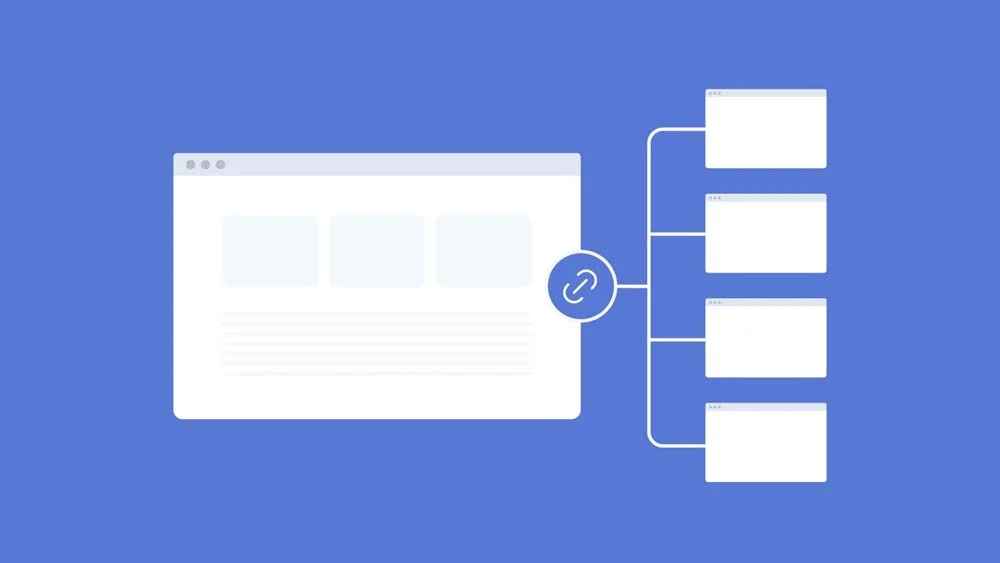SEO is a must for content writing for Google that will perform well in Google’s search results. SEO can be presented as anything from a mystical process that magically increases organic traffic to a straightforward checklist of things to do before you hit publish, depending on who you talk to. However, achieving sustainable results often requires comprehensive knowledge and the implementation of full SEO services tailored to the unique needs of your website and target audience.
The truth is that it’s relatively easy to write content that Google likes and will rank highly in Google searches. There are specific guidelines that you can follow when writing content for Google that will rank highly in the SERPs or search engine result pages. If you follow certain measures and incorporate them into your content, you will easily be able to write content that will rank better on Google than your competitors.
In this article, we will talk about how writing content for Google can help you rank higher. Let’s have a look at the guidelines you can follow-
Pick an excellent topic that has great keywords
There are currently over 1.7 billion websites online. When creating content with SEO in mind, it’s essential to select keywords with care. Select the subset of your domain that you wish to dominate and the topics for your upcoming blogs.
Keywords like electrical contractor marketing might be challenging to rank for because of how saturated the market is. That means that many marketers (and others) have created articles on the subject in an effort to improve their search engine rankings.
But keywords like “intent-based marketing” and “social intent data” could be useful. They have a sizable enough audience for you to attract new consumers, but not so many postings from similarly credible sources (high domain authority) that you’ll never rise to the top.
After settling on a specific market, you may begin focusing on keywords. The quality of each keyword varies. Finding keywords with a high search volume and low competition is the best strategy to achieve SEO success. Your chosen keywords should have significant monthly search traffic and be directly associated with the services or goods you provide.
You should incorporate your chosen keywords into your content once you’ve determined their relative importance and search volume. In addition to the written content, you should also use them in your-
- Page URL
- Title
- Meta description
- Insert into the image’s alt text and caption (if applicable).
- Wherever else it is relevant throughout the content
Write Properly
Your rankings will be based on the quality of your writing. Writing a subpar 500-word article and expecting it to rank highly in Google’s SERP is no longer a viable strategy. To bridge this gap, professional editing services play a pivotal role, ensuring your content is not just error-free but also polished to meet the highest standards of quality and SEO. Professional editors help refine your message, ensuring clarity and coherence while embedding strategic keywords seamlessly into your content, enhancing both its readability and search engine visibility. Here are some other ideas on how to make sure your material is as well-written and search engine optimized as the rest. Here’s how to make sure your material is as well-written and search engine-optimized as the rest:
Conclusions
Some people will only read the article’s conclusion before deciding whether or not to continue reading it. To get these people to read the whole article, you should sum up the post’s most important elements at the end and leave them with a sense of closure.
Introductions
If your readers aren’t skimming to the end, this is one of the first things they’ll see, so make it count! Make it interesting but also credible; people want to know right away if your page has the information they need.
Right Length
Longer pieces of content (at least 1,000 words) tend to do better in search engine rankings across the board.
Keyword
Crawlers from Google do care if you use your target keywords and related keywords in your content. You should use relevant keywords prominently and early on.
Suitable language
Using complicated language and technical terms is not a requirement for producing high-quality work. You may still publish engaging content without assuming your readers share a particular set of skills or knowledge. Utilize a casual, first-person tone. Ensure that they are easy to read by using a variety of language structures, short paragraphs, and proper formatting while still being brief and action-oriented.
To rank highly in search engine results pages (SERPs), content authors like yourself need to provide searchers with everything they could possibly want.
Use simple, straightforward sentences
Both people and search engines dislike needlessly long or complicated sentences. Search engines and human readers alike will benefit from your efforts to make your site content easily readable and scannable.
Try breaking up long strings of “and” with a new sentence if you notice yourself using it frequently. Also, try to keep the tone light and conversational. Internet writing is significantly different from the kind of academic writing you might have done in high school.
While there are no strict guidelines for the minimum grade level at which your text must be written, in general, aim for somewhere between a fifth and sixth grade reading level. However, if you struggle to write content for Google using simple and straightforward sentences due to any reason (like topic complexity, etc.), there is no need to get frustrated. You can use a rewording generator. It will quickly simplify the given content by replacing difficult words in the sentences with their easy synonyms.
Make sure of Readability
When we say “long,” we don’t necessarily mean “paragraphs long.” Since many readers only skim articles before plunging in, providing accessible information at the beginning can help capture the attention of those who otherwise wouldn’t bother.
Here are a few key methods to format your blog post:
- Make the blog content scannable by giving each part attention-grabbing headers that sum up its main points.
- Make brief paragraphs instead of long ones. There shouldn’t be more than four sentences in each.
- There should be various lengths of your sentences. Blog articles with a variety of sentence lengths are more pleasant to read. It makes people keep scrolling.
- Create emphasis with bullet points, numbered lists, and bold text.
- To clarify your point (or just to spice things up), use visual aids like pictures, graphs, and tables.
- Be sure the mobile version looks well. Google’s mobile-first indexing policy means that even great content won’t help if your mobile site looks horrible.
It’s Important to Build Links
Links help keep visitors on your site and earn credibility with search engines like Google. If you want your blog article to rank well, here are some links you should include:
Link to Credible Sources
Time and again, most popular content from various popular sites across different industries opens with a few of links to highly credible outside resources. Use links to reputable sources, like the Mayo Clinic or academic studies, if you’re working on medical content or search engine optimization (SEO) for doctors. This demonstrates to Google that you place a premium on quality.
Internal Links
One of the most effective methods of improving your search engine rankings is to strengthen your internal linking structure.
A higher position in SERP (search engine results page) is correlated with a greater number of internal links. Two or three internal links, either to other posts on the blog or to the main site, should be included in each blog entry.
Naturally, squeeze in as many links as possible, but make sure your anchor texts are adequate. Using the phrase “top SEO marketing agencies” as a link target when the post is actually about rank tracker tools is a bad idea.
You should also revisit previous blog articles on your site and add links to the new one you’ve published. This improves your post’s discoverability among visitors and in search engine results.
Optimize the remaining elements
It’s not a good idea to approach post titles, meta titles, and meta descriptions as an afterthought, even though high-quality content and keywords are crucial to your marketability and ranking.
You may improve your search engine rankings and the user experience by incorporating these features. Your post’s title, meta title, and meta description are all places where your keywords should be incorporated. The meaning of the content’s title becomes immediately apparent in that case, and then you should take care of-
Meta Title Tag
It is the clickable title of your blog post in search engines.
Meta Description
This is text that will appear in search engine results when people look for your blog.
Create a multimedia experience with your content
Creating a multimedia experience in your material is great. The longer a user spends on your site after clicking through to it from a search result, the more positive signals you send to Google about the quality of your content.
Here are a few tips to make your social media updates more interesting:
- Transform the article into a podcast and add a link to the episode to the top of the post.
- Include pictures, especially infographics, to help explain complex topics simply and clearly.
- Include relevant YouTube videos, whether they’re yours or someone else’s, to elaborate on your points.
- Put in a Typeform survey to get feedback (and use that feedback to write a blog article).
- Include a videoask, a neat tool that performs like a chatbot but through video, making it more engaging.
- Include moving pictures in your messages (everyone loves GIFs, right?).
- Insert a picture from Instagram
- Post a tweet as an attachment.
- To encourage people to share your content, make a “Click-to-Tweet” with a pre-populated tweet (I like to use Ultimate Blocks for this).
Including media like this in a blog post can affect page load time, but if you don’t overdo it and have fast hosting, there shouldn’t be any problem.
Final Words
If you want your content to perform well in Google search results, follow the aforementioned steps. However, it’s important to note that SEO is not accomplished in a single blog article. Search engine optimization interacts with many facets of your website. Technical aspects of your site, link development, and other authority-building recommended practices should not be ignored. So, make sure that, apart from following the guidelines while writing content for Google, you are also making sure that your content are being properly optimized for search engines.







